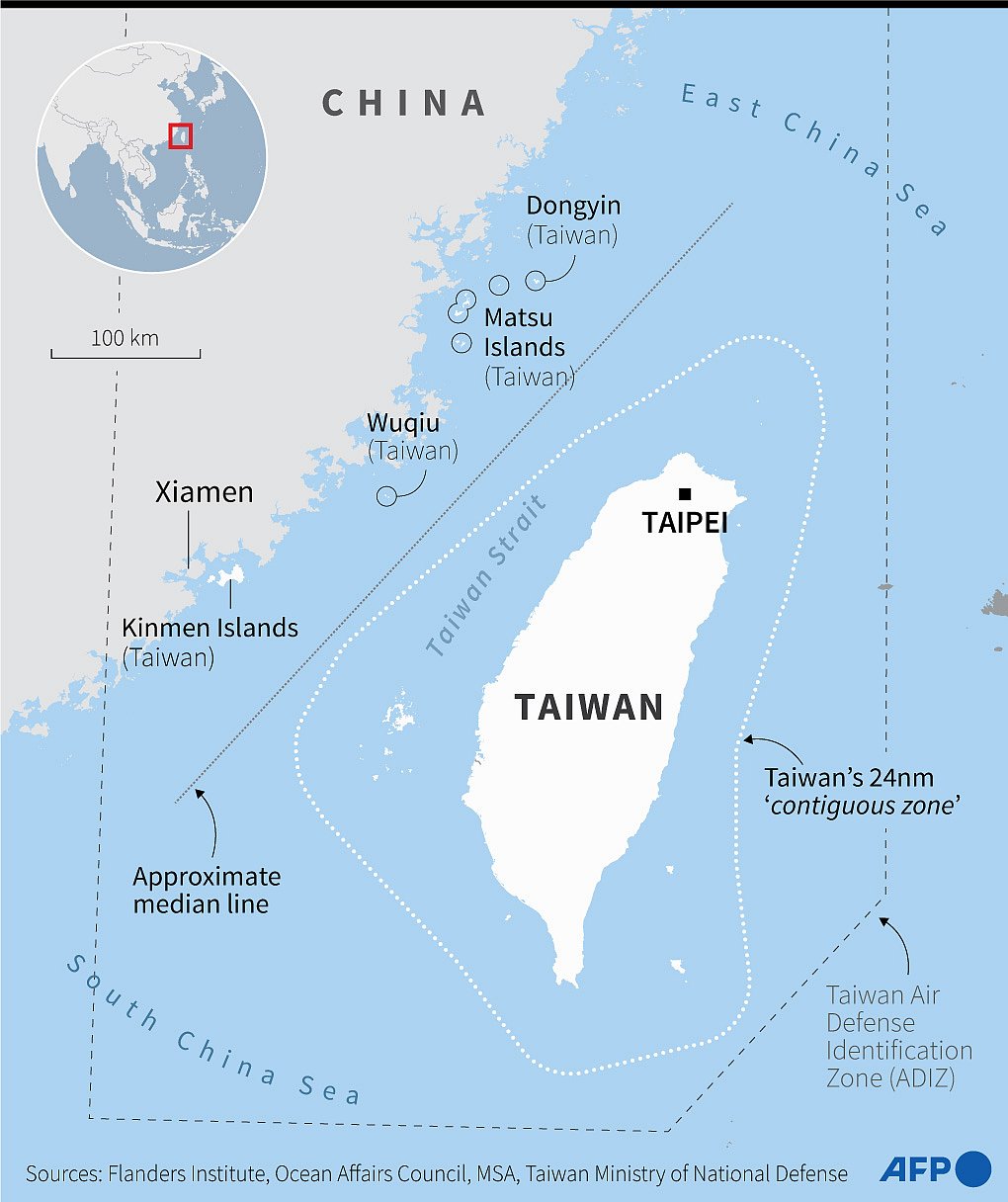Japan warship asserts right to sail through Taiwan Strait: Media

A Japanese warship cruised through the Taiwan Strait for the first time to assert its freedom of navigation, local media said Thursday, a week after a Chinese aircraft carrier sailed between two Japanese islands near Taiwan.
Japan’s top government spokesman Yoshimasa Hayashi declined to comment on the reports at a regular briefing because they concern military operations.
The United States and its allies are increasingly crossing the 180-kilometre (112-mile) Taiwan Strait to reinforce its status as an international waterway, angering China.
Several Japanese media outlets said the Sazanami destroyer made the unprecedented passage on Wednesday at the same time as military vessels from Australia and New Zealand.
The three nations planned to conduct military drills in the contested South China Sea, the reports said.
Separately on Thursday, Taiwan’s defence ministry said 43 Chinese military aircraft and eight naval vessels were detected around the democratic island within a 24-hour period.
Last week, China’s Liaoning aircraft carrier sailed between two Japanese islands near Taiwan for the first time, accompanied by two destroyers.
The ships entered Japan’s contiguous zone -- an area up to 24 nautical miles from the country’s coast -- Tokyo said, calling the incident “totally unacceptable”. China said it had complied with international law.
It followed the first confirmed incursion into Japanese airspace by a Chinese surveillance aircraft in August.
The Yomiuri Shimbun daily cited unnamed government sources as saying Prime Minister Fumio Kishida had instructed Wednesday’s Taiwan Strait journey over concern that doing nothing following China’s intrusions could encourage Beijing to take more assertive actions.
‘Serious concern’
Beijing views Taiwan as a renegade province and claims jurisdiction over the body of water that separates the island from China.
But the United States and many other countries argue their voyages are usual, citing freedom of navigation.
China this month accused Berlin of heightening security risks in the Taiwan Strait, a day after two German navy ships sailed through the waters.
On Wednesday, China test-launched an intercontinental ballistic missile into the Pacific Ocean in its first such exercise in decades.
Japan said it had not been given advance notice of the test, with Hayashi expressing “serious concern” about China’s military build-up in comments he reiterated on Thursday.
“China’s military intrusion into our territorial airspace and other incidents have been happening one after another in a short period of time,” Hayashi said.
Japan will do its “utmost in patrolling and monitoring” the situation, he added.
Beijing has said it will never renounce the use of force to bring Taiwan under its control, with Chinese leader Xi Jinping in recent years upping the rhetoric of “unification” being “inevitable”.
In response, Taiwan has strengthened economic and political ties -- most notably with the United States, its biggest weapons provider -- while increasing its defence budget.
Bec Strating, professor of international relations at La Trobe University, said Japan’s reported Taiwan Strait transit “is part of a broader pattern of greater naval presence by countries in and beyond Asia that are concerned about China’s maritime assertions”.
“Japan in particular has been dealing with China’s ‘grey zone’ tactics in the East China Sea,” including an increasing number of coastguard vessels sailing close to disputed islands, she told AFP.
Grey-zone tactics are actions that serve to exhaust a country’s armed forces, military experts say.
Kishida’s ruling party will hold a leadership election on Friday that will be a de facto vote to decide Japan’s next prime minister, with candidates debating issues including regional security.